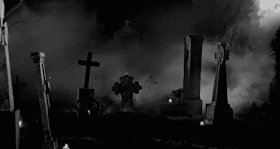About Poet : H.W. Longfellow was an American poet and educator worked during the 19th century.
'Daybreak' is a poem, full of motivation and enthusiasm. In this poem poet has personified the wind to proceed his thoughts regarding the hardships of the life. The poem is divided into the nine couplets.
As every title has its own significance, same way, the title of the poem suggests that we don't have to stop in life because our goals are yet not fulfilled.
Poem Analysis :
A wind came up out of the sea,
And said, 'O mists, make room for me.'
As Wordsworth says that nature is the best teacher in our life. Likewise, this poem has also the same motif. In the beginning, the wind floats from sea to the land, where people are sleeping at the time of dawn. Here wind has an honest duty for the people whom it cares. But the mist makes obstacle in reaching towards the people. However, wind is determined to reach its goal same way in our lives also we find so many obstacles, but we need to overcome it and for that one should keep ourselves away from social barriers.
It hailed the ship and cried, Sail on,
Ye mariners, the night is gone;
After clearing the mist, wind reaches to the ship and tells the mariners that night has gone, it is the time to sail on again. Here we can assume that the morning time is the best time for hardwok. Because there are less obstacles in our path as livid can not awake early.
And hurried landward for away,
Crying 'Awake it is the day. '
The nature of wind is to keep floating, so now it moved towards the land, where this social animals have been sleeping for an hours. Suddenly wind shouts and tells them that 'it is the day.'
It said unto the forest, ' shout !
Hang all your leafy banners out ! '
Just meeting human world is not enough for wind, because everyone on earth is its friend. Not attaching its feeling for the human world and moved into forest where it tells the wood to let leaf enjoy the sunshine.
It touched the wood- bird's folded wing,
And said, ' O bird, awake and sing.'
In forest, wind touches the wing of bird and tells to chirp and lightens the new day of life.
And o'er the farms ' O Chanticleer,
Your clarion blow; the day is near. '
After taking a short halt in forest, wind proceeds to the farm, where farmers have been sleeping, here wind tells the Chanticleer to start his clarion so these dreaming farmers gets awake and start working for the real 'yields'.
It whispered to the fields of corn,
' Bow down, and hail the coming morn.'
Still wind's duty doesn't over. It whispered to corn and bow down to the sun, as their survival is depending on the sun. Same we in life we are so much depended on others, and to we owe to them.
It shouted through the belfry tower,
'Awake, o bell ! proclaim the hour. '
In the second last couplet, wind shouted at bell, because it is his duty to proclaim, with its proclamation all sleeping city will get back to their work.
It crossed the churchyard with a sigh,
And said, ' Not yet ! in quiet lie !
In his journey, wind reaches to graveyard, after realizing that he is in churchyard, he introspects that still he can not take 'rest' cause there are so many things missing in his life.
Thus here poet has personified the wind to proceed his messages to human beings. And not to forget the people who have been helping us invincibly in fulfilling our life goals.










No comments:
Post a Comment